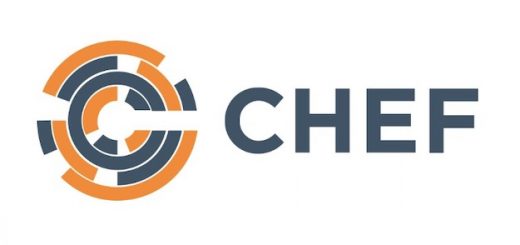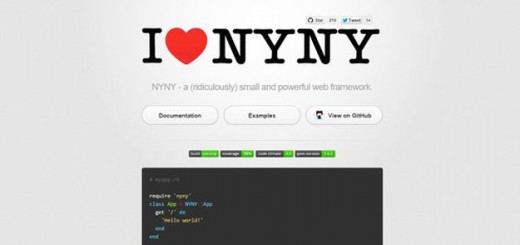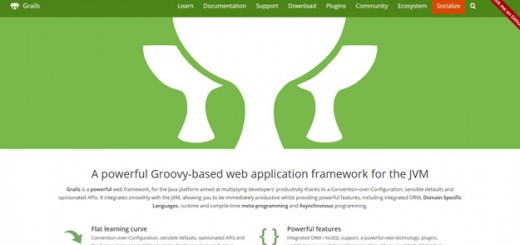From last four years the acceleration of touch screen devices such as iOS, Windows and Android based platforms has compelled developers and web designers to rethink the structure of their own webapps for the new “touch experience” introduced by the iPhone in 2007. Daily usage of smartphone penetration, cellular subscriptions, search traffic, ad impressions, app sales: everything is up. Thus it seems inevitable that mobile devices are rapidly overtaking traditional desktop and laptop computers as a primary computing platform.
Mobile web apps offer abundant advantages over native apps; and although they may encounter some design, development and deployment challenges, they are a powerful cross platform, scalable and an affordable solution.
The massive growth of mobile computation presents software developers with some pretty amazing opportunities, but also significant challenges. The massive explosion of mobile platforms and devices has created an unprecedented level of fragmentation, and it’s going to get worse before it gets better.
In this article we have compiled a list of Best Mobile App Development Frameworks for building interactive apps, keeping in mind that one should use as much HTML as they can without negatively impacting the user experience because the more HTML one incorporates, the less they have to worry about fragmentation. And the less you have to worry about fragmentation, the more awesome stuff you can build.
1. Ionic
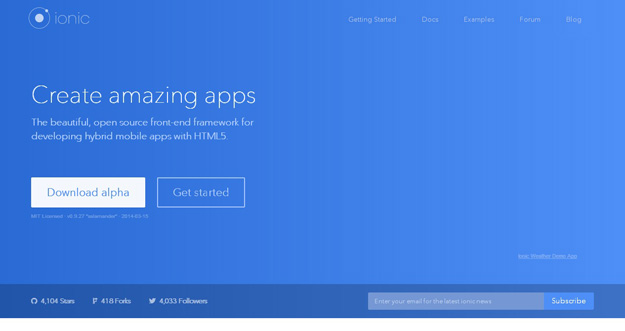
Ionic, a front-end framework, a helps building native-like mobile apps with HTML5, CSS3 and JavaScript. It is not a replacement for PhoneGap or a JavaScript framework but the focus is on the UI interactions and design. The framework ships with SASS and various AngularJS extensions (optional) and many components like buttons, toggle, header/footer, tab bar and more.
2. Sencha Touch
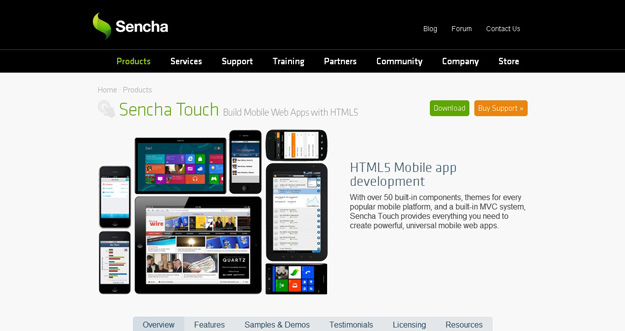
Sencha touch allows users to develop mobile web apps that look and feel native on iPhone, Android and Blackberry touch devices. Sencha is world’s first app framework built with HTML5, CSS and JavaScript for delivering audio/video or local storage, rounded corners, background gradients and shadows. Sencha touch allows developers to create powerful animation systems and the code which is created by Snecha is pixel independent that means it allows developers to change the overall scale of their interfaces.
3. Clank
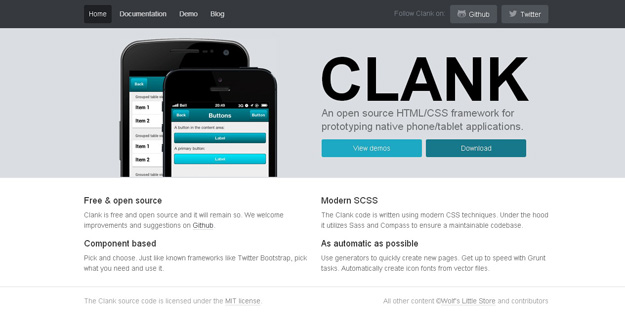
Clank is a free and open source HTML-CSS framework for easily prototyping native mobile or tablet apps. It focuses on providing a consistent UI “without the concern of mimicking a specific OS”. The framework is component-based so that we can pick and use only the needed parts. And these components include buttons, forms, sliders, toggles and much more.
4. Appium
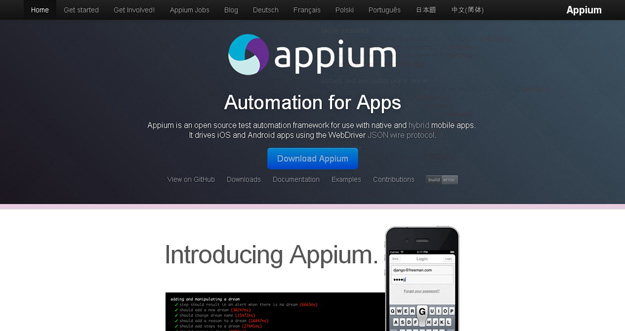
Appium is an open source framework which helps automating mobile app testing from any language and any test framework, with full access to back-end APIs and DBs from test code. It works for both iOS + Android apps and tests can be written with Java, Objective-C, JavaScript, PHP, Python, Ruby, C#, Clojure, or Perl. The framework is Mac OS X only and requires Nodejs to run.
5. Sculpt
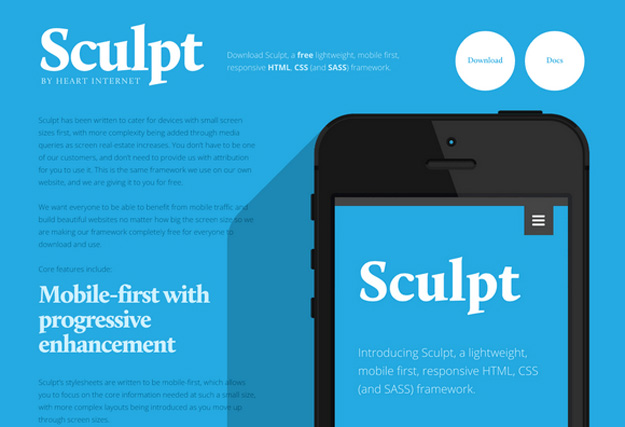
Sculpt is a lightweight, mobile first, responsive HTML, CSS and SASS framework. It has been written to cater for devices with small screen sizes first, with more complexity being added through media queries as screen real-estate increases. With three grid sizes (732px, 960px and 1140px) built in and active depending on your device’s screen size you can be sure your content will be well presented no matter the conditions.
6. Junior
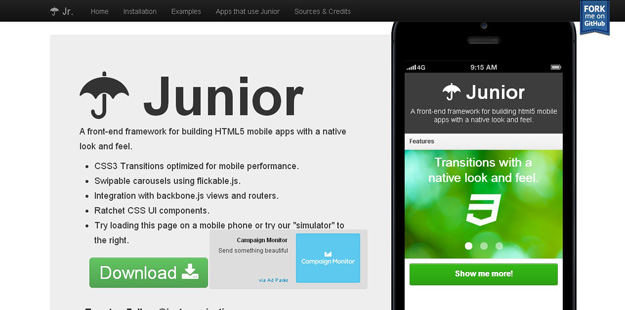
Junior is a HTML5 front-end framework for creating mobile apps that look and behave like native. It uses CSS3 transitions for a slick performance, supports swipable carousels and includes various UI components (from Ratchet). The framework uses Zepto (which is nice for jQuery fans as it has a jQuery-like syntax) and has integration with backbone.js views + routers. Junior is pretty easy to use and has the documents + examples to get you started.
7. Framer
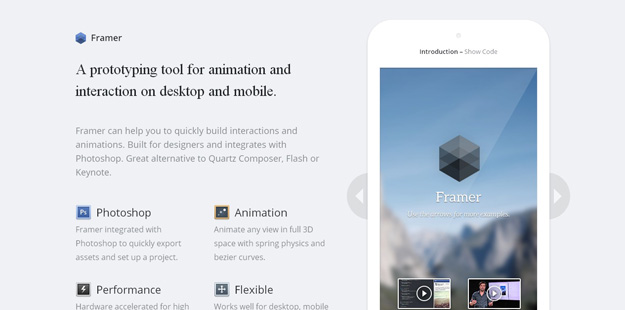
Framer is an open source framework for easily building and testing complex interactions + rich animations for desktop and mobile layouts. It is built with web technologies and works by simply editing a JavaScript file with the functions provided. The layouts created are structured with views (like layers), there are animations provided and everything can be styled with either JavaScript or CSS.
8. Spine.js
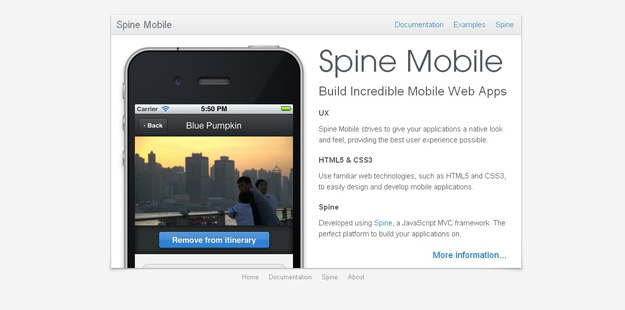
Spine Mobile is a JavaScript framework, built on top of SpineJS, for building mobile web apps that look and feel native. The framework comes with specialized controllers, panel layout, hardware accelerated transitions and touch events. Apps are developed with HTML5-CSS3 and the easiest way of building Spine Mobile apps is with Hem, Spine.app, GFX and jQuery. Also, you’ll need Node.js.
9. SideTap
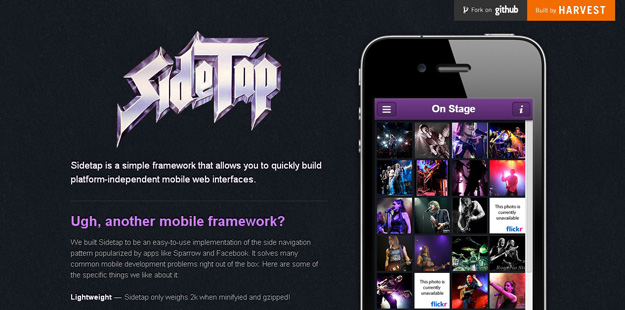
Sidetap is a simple and lightweight (2kb minified, gzipped) framework for creating mobile web apps. The framework actually focuses on providing a flexible side-navigation similar to the one we know from Facebook’s mobile app, and, once the navigation part is solved, it is pretty easy to build a simple mobile web app.
10. Moobile
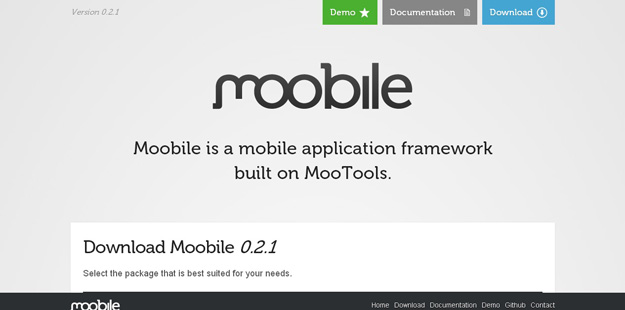
Moobile is an exciting and fresh project; a mobile web application framework built on MooTools. Currently, it is focused on providing a iOS-like experience on WebKit browsers and comes with many controls like bar, button, image, list, activity indicator, slider and more. It also has support for transitions like fade, slide, cubic or cover and can display native-like alerts. Interfaces created with Moobile are fluid, they will work well both in iPhone + iPad and look good when orientation changes.
11. Zoey

It is a HTML5-CSS3-powered framework for creating mobile apps, built on top of Zepto.js and weights only 6kb (gzipped). Zoey has the UI components like navigation, lists, buttons, control groups, forms and grids. The framework is compatible with iOS + Android and comes with an app skeleton that covers all the features.
12. Helios

Helios is an open-source framework that provides essential backend services for iOS apps, from data synchronization and push notifications to in-app purchases and passbook integration. It allows developers to get a client-server app up-and-running in just a few minutes, and seamlessly incorporate functionality as necessary.
13. iUI
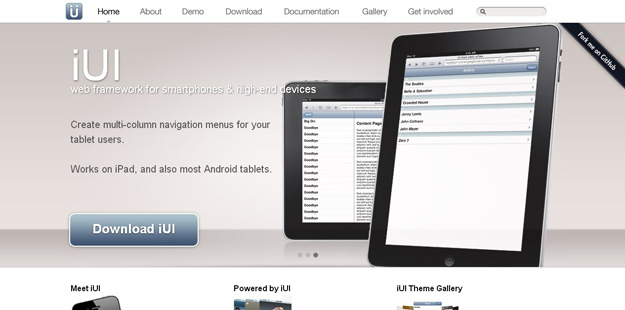
The framework includes a JavaScript library, CSS and images for developing touch-enabled web apps. User interfaces to be created are iPhone-like yet compatible with most smartphones and tablets and has support for menus, forms, lists, image galleries and more. Also, there are built-in extensions for caching, getting system information, HTML5 videos or theme switching. iUI is well-documented and has tutorials to get you started easily.
14. Wink
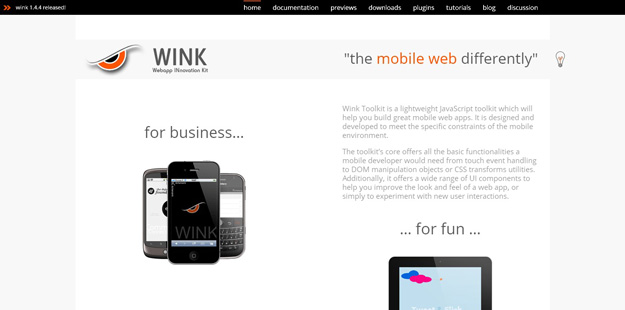
Wink toolkit is a lightweight JavaScript framework which assists users to develop great and useful mobile web applications. The toolkit contains all basic functionalities which are generally a mobile developer requires to develop a mobile web application, it provides functionalities like touch event handling, DOM manipulation objects or CSS transforms utilities. It also offers a wide range of UI components which help developers to improve the look and feel of their mobile applications.
15. DHTMLX Touch

DHTMLX Touch is a free HTML 5 based JavaScript library for building cross platform mobile web apps. DHTMLX Touch allows developers to create eye catching, robust applications for mobile and touch devices. It offers a wide range of available UI elements, which help developers to develop business and entertainment related applications.
16. RestKit
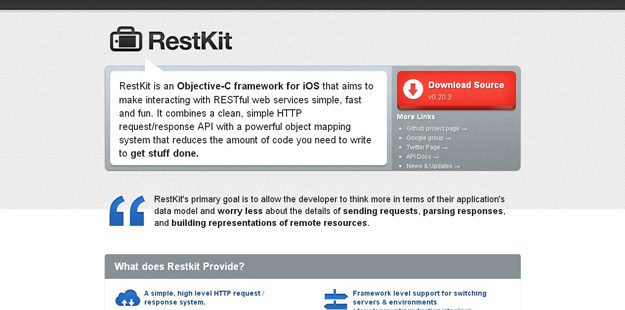
Restkit is an open source objective-C framework that allows interacting with RESTful web services in objective C on iOS and Mac OS X. It combines a clean, simple HTTP request/response API with a powerful object mapping system that reduces the lengthy code which users need to written. Restkit also provides a system for modeling remote resources by mapping them from JSON (or XML) payloads back into local domain objects.
17. Joshfire

Joshfire is an open source multi device development frameworks which assists developers to develop web applications that can run on multiple devices. It uses standards like HTML5 and JavaScript and allows developers to quickly integrate native and dedicated web apps for browsers, Node.JS, desktops, smart phones, smart TVs and connected objects.
18. ChocolateChip UI
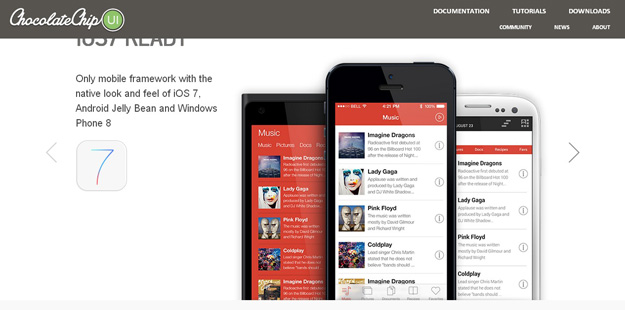
ChocolateChip-UI is a mobile web app framework which uses HTML5, WAML, CSS and JavaScript. It is based on ChocolateChip JavaScript Library which includes two new libraries ChUI.JS and ChUI.css. ChocolateChip-UI takes advantage of HTML5, CSS3 and ECMAScript5 to deliver a consistent, focused, easy to use and compact framework for creating mobile apps rivaling native iOS apps.
19. Zepto.js
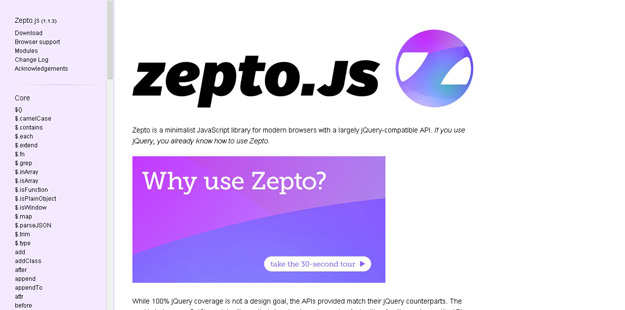
Zepto is a minimalist JavaScript library for modern browsers with a largely jQuery-compatible API. Zepto fully supports multiple touch devices and helps developers to create applications for iOS, Android and WebOS.
20. JO
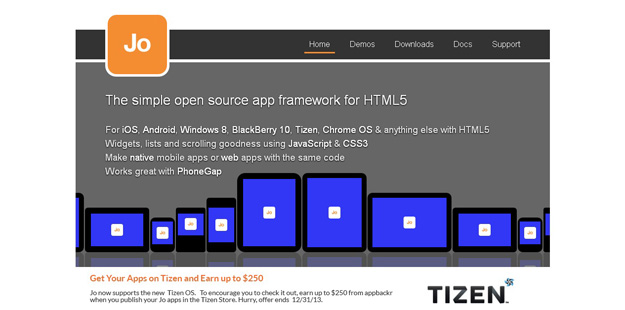
With JO you can create applications for iOS, Android, WebOS, BlackBerry, Chrome OS and anything else with HTML5 Widgets. JO helps you to create a native-like app experience, and lets you build your app with JavaScript, tweak some CSS and call it a day. Jo is an open source a free framework enriches with JavaScript, CSS3 and works great with PhoneGap.
21. Enyo
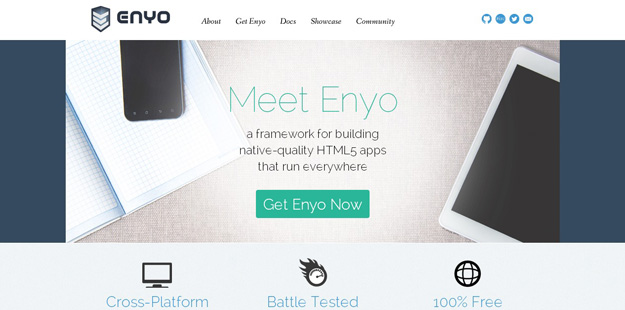
Enyo, the JavaScript framework which was created to power the apps on HP’s TouchPad, has recently reached v2 and now offers cross-platformcompatibility rather than only webOS (as v1 did). The new Enyo supports both desktop + mobile, works in all major browsers and comes with a broad set of cross-platform UI widgets + a powerful layout library for building apps. UI widgets include toolbars, buttons, form elements, sliders, menus, pickers, tooltips and more.

